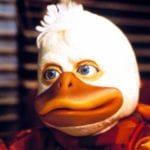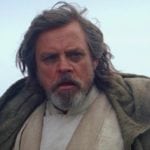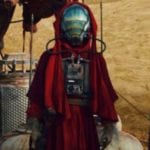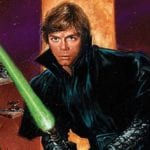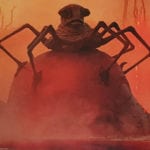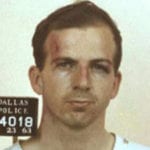 Creepy
Creepy  Creepy
Creepy  Technology
Technology 10 Scientific Breakthroughs of 2025 That’ll Change Everything
 Our World
Our World 10 Ways Icelandic Culture Makes Other Countries Look Boring
 Misconceptions
Misconceptions 10 Common Misconceptions About the Victorian Era
 Mysteries
Mysteries 10 Strange Unexplained Mysteries of 2025
 Miscellaneous
Miscellaneous 10 of History’s Most Bell-Ringing Finishing Moves
 History
History 10 Great Escapes That Ended Right Back in Captivity
 Weird Stuff
Weird Stuff 10 Fascinating Things You Might Not Know About Spiders
 Food
Food 10 Everyday Foods You Didn’t Know Were Invented by the U.S. Military
 History
History 10 Odd Things Colonial Americans Kept at Home
 Creepy
Creepy 10 More Representations of Death from Myth, Legend, and Folktale
 Technology
Technology 10 Scientific Breakthroughs of 2025 That’ll Change Everything
 Our World
Our World 10 Ways Icelandic Culture Makes Other Countries Look Boring
Who's Behind Listverse?

Jamie Frater
Head Editor
Jamie founded Listverse due to an insatiable desire to share fascinating, obscure, and bizarre facts. He has been a guest speaker on numerous national radio and television stations and is a five time published author.
More About Us Misconceptions
Misconceptions 10 Common Misconceptions About the Victorian Era
 Mysteries
Mysteries 10 Strange Unexplained Mysteries of 2025
 Miscellaneous
Miscellaneous 10 of History’s Most Bell-Ringing Finishing Moves
 History
History 10 Great Escapes That Ended Right Back in Captivity
 Weird Stuff
Weird Stuff 10 Fascinating Things You Might Not Know About Spiders
 Food
Food 10 Everyday Foods You Didn’t Know Were Invented by the U.S. Military
 History
History 10 Odd Things Colonial Americans Kept at Home
10 Pieces Of Pop Culture That Influenced ‘Star Wars’
Artists and writers don’t create from a void. Whether they realize it or not, everyone is inspired by a range of sources, and George Lucas is no different. And unlike a lot of artists, Lucas hasn’t been shy about revealing what influenced his younger self while creating the Star Wars universe. What follows are the cinematic and literary inspirations for elements in the most successful franchise ever.
10Darth Vader: The Lightning In The Fighting Devil Dogs
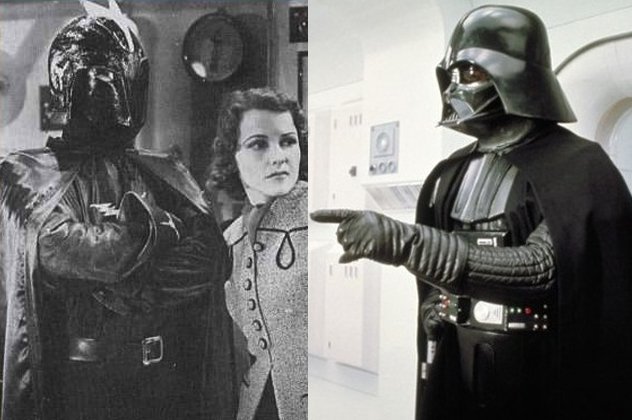
George Lucas once said, “With both Star Wars and Raiders, I started out by asking myself ‘Gee, when I was a kid what did I really like?’ ” The answer was that he loved the old serial adventures of the 1930s.
One of the earliest costumed supervillains in cinema was The Lightning, who appeared in the 12-chapter serial The Fighting Devil Dogs (1938). The Lightning wore a black leather costume, gauntlets, a helmet, and a cape, and it’s been speculated that these are all elements Lucas borrowed for Darth Vader, although Lucas has never actually confirmed that. Both Vader and The Lightning also had minions who wore all-white armor and helmets.
The Lightning, however, was not a mouth breather like Vader. That originated from artist Ralph McQuarrie, who was tasked with creating conceptual drawings of characters prior to the principle filming of 1977’s Star Wars Episode IV: A New Hope. In an early draft of the script, Vader was supposed to transfer from the Star Cruiser to Leia’s rebel ship via the vacuum of outer space, so McQuarrie drew a respirator on Vader’s mask. “George loved it,” McQuarrie said, and the respirator and the creepy, labored breathing became a permanent fixture of the Sith Lord.
9Planet Naboo: James Gurney’s Island Of Dinotopia
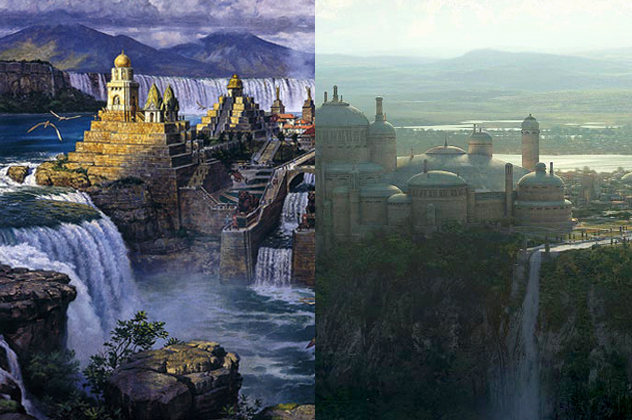
Lucas has said that James Gurney’s children’s book Dinotopia: A Land Apart From Time (1992) was his son Jett’s favorite book. In early 1994, Columbia Pictures approached Lucasfilm to help with a film based on Gurney’s book, and Lucas got a chance to see much of the early conceptual work for the movie. The project stalled in March and Columbia Pictures pulled out of the project, leaving it in limbo.
Seven months later, Lucas began writing the script for Star Wars Episode I: The Phantom Menace. Lucas said that the “backstory [for episodes I, II, and III] was sketched out in a rudimentary fashion when I wrote the first trilogy. A lot of the story points were there. But the actual scenes and many of the characters were not.”
It’s clear that some of those scenes and characters were, at the very least, influenced by Gurney’s work. The Phantom Menace opens on the lush, swampy Naboo, which is reminiscent of the jungles on Dinotopia. Naboo’s capital city of Theed is very similar to Waterfall City. Even Jar Jar Binks resembles Bix, a talking Protoceratops, both in looks and personality.
But the jaw-dropper can be seen at the close of The Phantom Menace during the parade through the streets of Theed, which is identical to Gurney’s painting Dinosaur Parade. When Gurney described seeing the scene in the theater, he said, “I nearly dropped my popcorn, because I thought it looked like Dinotopia.” That scene alone drew ire from critics, with some crying plagiarism and at least one calling Lucas a “master thief.”
As the controversy grew, Gurney approached Lucasfilm. “Many people are asking whether I had any role in designing the (Naboo) city of Theed in Star Wars: The Phantom Menace. I didn’t,” Gurney wrote on his website. “I’m in the process of trying to find out how it came to be that scenes in that movie seem to resemble scenes from Dinotopia. I am communicating with people from the Lucasfilm organization.”
The day after the film was released, Lucas personally called Gurney to discuss the similarities. Neither would divulge what was said, but their relationship was still amicable. In an interview shortly afterward, Gurney expressed the utmost respect for Lucas.
8Emperor Palpatine: Ming The Merciless In Flash Gordon
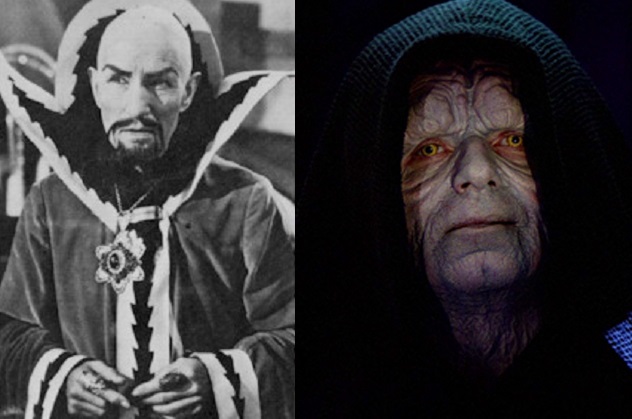
We’ve already mentioned that Lucas loved 1930s serials, and perhaps the seminal and most successful serial was Buster Crabbe’s Flash Gordon. Lucas has often claimed that Star Wars evolved from his hope to remake Flash Gordon. Alas, the license wasn’t available, but the influence of the serial is easily seen in Lucas’s work. Both are space operas replete with lasers, spaceships, and rebel protagonists fighting a tyrannical emperor. Lucas’s Emperor Palpatine shared a love for bell-sleeved robes, thrones, and a bald pate with Ming the Merciless from Flash Gordon. Ming’s rogue planet Mongo also traveled around the galaxy destroying other planets, just like Palpatine’s Death Star.
The similarities didn’t end there. Lucas named his films “episodes” just as Flash Gordon had “chapters.” The famous rolling title crawl at the beginning of every film came straight from Flash Gordon Conquers the Universe (1940). In 1980’s Star Wars Episode V: The Empire Strikes Back, we are introduced to the Cloud City above the gas giant Bespin. Flash, too, traveled to a Cloud City. He also journeyed to an underwater metropolis reminiscent of the Gungan city in The Phantom Menace.
7Planet Coruscant: Trantor In Isaac Asimov’s Foundation Series
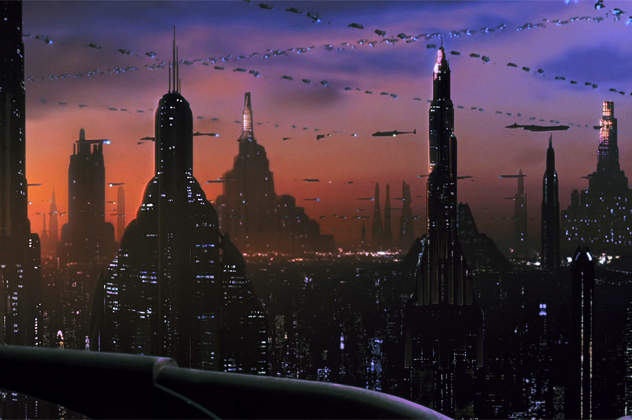
In the original plot for A New Hope, Lucas planned to take the audience to the emperor’s planet-wide imperial city called Jhantor, a clear homage to one of the first planet-wide cities in science fiction—Isaac Asimov’s planet Trantor. Asimov first introduced his planet in a short story, and it later played a prominent role in his Foundation series. Limited by the special-effects technology of the 1970s, Lucas wrote Jhantor out of the script, but it reemerged in the prequels as the planet-city Coruscant.
Both Coruscant and Trantor are an ecumenopolis—a totally urbanized planet. There are no oceans, mountains, or parks. The weather is technologically controlled, and virtually everything needed to sustain its vast populations must be imported. Asimov estimated that Trantor housed 40 billion people, a clear underestimation since the Earth currently has about a fifth of that population and it’s nowhere near an ecumenopolis. The population would more realistically be four trillion, about four times that of Coruscant.
Both planets are the seats of government near the center of the galaxy. The Imperial government sat astride Trantor, and both the Galactic Republic and Galactic Empire called Coruscant home. Citizens in both ecumenopoleis are wealthy, living high in soaring skyscrapers and deep in sprawling subterranean complexes.
6C-3PO And R2-D2: Tahei And Matashichi In The Hidden Fortress
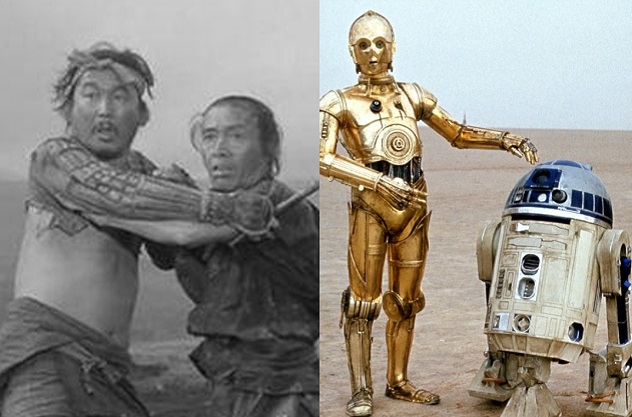
Akira Kurosawa is considered one the most influential filmmakers in cinema history, and the likes of Sergio Leone and the Coen brothers have made films that paid homage to him. We’ve already discussed how Lucas was influenced by Kurosawa’s comedic adventure The Hidden Fortress when he wrote A New Hope. In a 1973 synopsis for Star Wars, Lucas wrote that he intended to make a science fiction version of Kurosawa’s samurai films, naming Hidden Fortress in particular.
The Hidden Fortress opened with two bickering peasants—Tahei and Matashichi—as they escape a heated battle into hostile territory. One peasant is tall, the other short. They bump into an old man who’s secretly a general from a long-ago war. The old warrior is bent on protecting a princess on her journey to rejoin her clan so that they can carry on the fight against an evil enemy. Sound familiar?
Lucas said that he used Tahei and Matashichi in particular to form the characters C-3PO and R2-D2, using them for comic relief. Nor is this all he borrowed from Kurosawa films. The fight scene in the cantina is lifted directly from Yojimbo, and the horizontal swipe transition between scenes is a signature of Kurosawa.
5Obi Wan Kenobi: Gandalf From The Lord Of The Rings
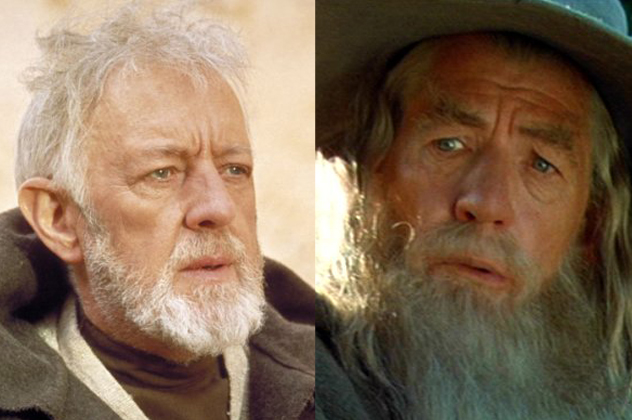
As the creators of two of the biggest mythological worlds in the 20th century, Lucas and J.R.R. Tolkien have often been compared. Personally, they are nothing alike, but they both loved heroic epics. Tolkien drew inspiration from classic literature such as Beowulf, Le Morte d’Arthur, and The Kalevala, while Lucas was inspired by pop culture such as movies and comic books. Some analysts have scoffed at the notion that Lucas drew anything but a rudimentary inspiration from The Lord of the Rings, but Lucas has claimed otherwise, and the parallels between the two worlds are compelling.
First, there are the superficial similarities: sword fights, princesses, and magical abilities. While Tolkien wrote his epic as one book (it was the publisher who broke it into a trilogy), the structure of Lucas’s episodes IV through VI (which he claimed to have written all at about the same time) was remarkably similar to Tolkien’s books. The first movie/book gathered the heroes together and gave them a mission. The second split the heroes in two and had them follow different adventures. The third had the climactic battle between the heroes and a seemingly unstoppable enemy, resulting in sacrifice. Even the names of the third installments are similar: The Return of the King and Return of the Jedi.
There’s also some character overlap. Both Yoda and Gollum were small, pointy-eared, green creatures with an odd way of speaking. Darth Vader was the head of an evil sect (Siths) and the right hand of Emperor Palpatine, while the Witch-king of Angmar headed a band of evil wraiths (Nazgul) and was in the thrall of Sauron.
Then there are the striking similarities between Obi Wan Kenobi and Gandalf. They were both wizened and bearded and wore hooded gray robes. Both were wizards and teachers. Both carry swords that glow blue and are vanquished by antagonists (Darth Vader and Balrog) whose swords glow red. And both Kenobi and Gandalf sacrifice themselves for the other heroes only to later return from the dead.
4Han Solo: Rhett Butler In Gone With The Wind
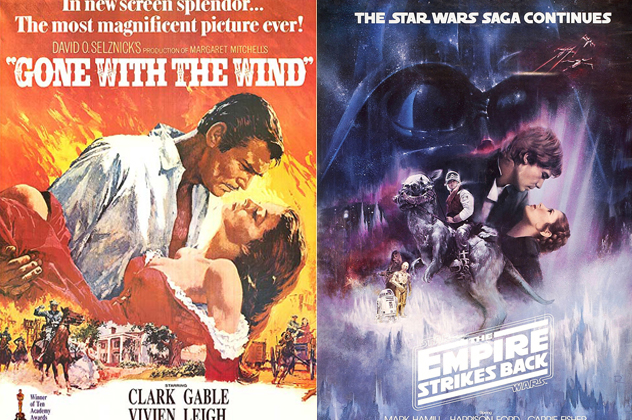
The character Han Solo is complicated, and fans have been debating for decades about whether he’s a gun-slinging cowboy or a pirate. Princess Leia called him a “scoundrel.” In reality, he’s probably a little bit of each—a selfish anti-hero who breaks hearts.
As a film student at UCLA in the late ’60s, Lucas was familiar with 1939’s Gone with the Wind and it clearly influenced him as he wrote Star Wars. Both stories are about a civil war and peg the rebels as the protagonists.
The similarities are even more evident when the relationship of Han Solo and Princess Leia are compared to Rhett Butler and Scarlett O’Hara. Both Han and Rhett are egocentric rogues who make a living as blockade runners. Both care more for wealth than the rebel cause, both are in love with feisty women from a higher socioeconomic class, and both of those women are at least initially interested in good boys but are ultimately drawn to bad boys.
Even the dialogue is similar. At one point in Gone with the Wind, Scarlett is surprised that Rhett cares only for profit. She asks, “Are you trying to tell me you don’t believe in the cause?” He replies: “I believe in Rhett Butler, he’s the only cause I know.” In A New Hope, Han tells Leia: “Look, I ain’t in this for your revolution, and I’m not in it for you, Princess. I expect to be well paid. I’m in it for the money.”
Lucas further reinforced the similarities when he approved a poster for Empire Strikes Back that is almost a copy of a 1967 poster for the re-release of Gone with the Wind.
Gone With the Wind is still the highest-grossing film of all time (when adjusted for inflation), estimated to have made $3.4 billion. A New Hope is the third-highest grosser at $2.7 billion (again adjusted for inflation).
3Death Star: German Cannon Placement In The Guns Of Navarone
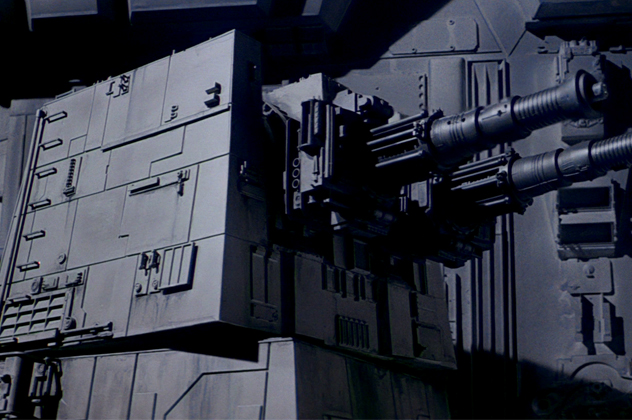
Lucas has frequently cited war movies as inspirations for Star Wars. While assembling the rough cut of the dogfight over the Death Star, Lucas spliced together dozens of cinematic dogfights as moving storyboards to choreograph where he wanted the TIE and X-wing fighters to move within each shot. To choreograph the Millennium Falcon’s escape from the Death Star, when Luke and Han are in its gun turrets, Lucas lifted a scene right out of the 1943 World War II classic Air Force.
Lucas grew up on a steady diet of World War II cinema. “I loved the war,” he later said. “It was a big deal when I was growing up. It was on all the coffee tables in the form of books, and on TV with things like Victory at Sea. I was inundated with these war things.”
One World War II movie—The Guns of Navarone, from 1961—is considered among the best. It’s about a fictional Greek island called Navarone in the Aegean Sea where the Nazis have installed a pair of radar-controlled super cannons. The guns threaten the evacuation of British troops on nearby Keros Island, just as the rebels on Yavin IV are threatened by the Death Star. Commandos race to destroy the Navarone super cannon before the British transports get within range, just as the X-wings race to destroy the Death Star before it can fire on Yavin IV. And the Death Star’s laser-firing sequence is lifted almost exactly from the firing sequence for the super guns on Navarone.
Another classic World War II movie inspired the X-wing trench-run that led to the Death Star’s destruction. The Dam Busters (1955) chronicled the real-life 1943 mission where Allied bombers bounced bombs across the surface of the Ruhr River to explode against the base of a huge Nazi dam. Lucas borrowed lines from this movie verbatim: “Get set for your attack run!” and “Look at the size of that thing!”
The movie 633 Squadron (1964) inspired another climactic scene. In the film, a squadron is sent to Norway to bomb a V-2 rocket fuel plant. A side plot has Norwegian resistance fighters disabling the anti-aircraft guns that protected the plant before the Allies bombed it. Lucas borrowed that plot for the climax of Return of the Jedi.
2Princess Leia: Dejah Thoris In Burroughs’s John Carter Series
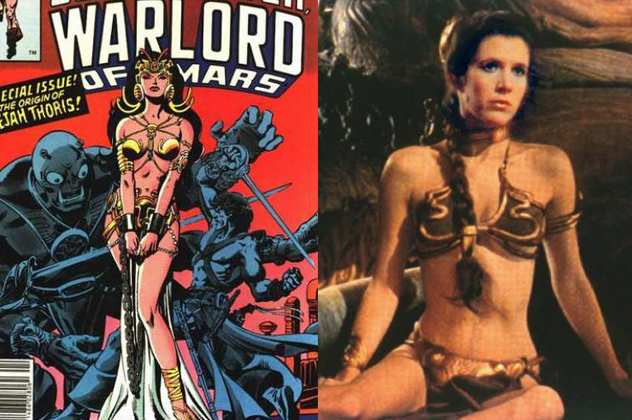
We’ve already discussed that the idea for Star Wars sprang from Lucas’s effort to acquire the rights to the Flash Gordon movie. After he failed to purchase the rights, Lucas said he researched “where [Flash Gordon creator] Alex Raymond got his idea: The works of Edgar Rice [Burroughs], especially his John Carter series of books.” It’s clear that, while researching, Lucas borrowed his own ideas from the series.
First, there’s the princess who’s often a captive to the bad guys. While Leia is nothing like Deja Thoris in personality, Thoris loved to wear metallic gold bikinis, an outfit that Leia made famous.
Jabba the Hutt’s desert sail barge is similar to the flying boats that hover above the sand dunes of Mars in Burroughs’s works. Fights that culminate in dismemberment are a frequent occurrence in John Carter books, and four fights in the six Star Wars films resulted in fewer limbs (five if you count Darth Maul’s bisection).
Then there’s the vocabulary that Lucas plundered. The word “Jed” means Martian royalty and has obvious similarities to “Jedi.” “Padwars” are low-ranking officers, similar to “Padawans,” who are low-ranking Jedi apprentices. While Banthas are elephant-looking beasts on Tatooine, Banths are cat-like carnivores on Mars. And while the Sith are vicious martian insects in Burroughs’s books, they’re the evil antagonists in Lucas’s.
1Tatooine: Arrakis In Frank Herbert’s Dune
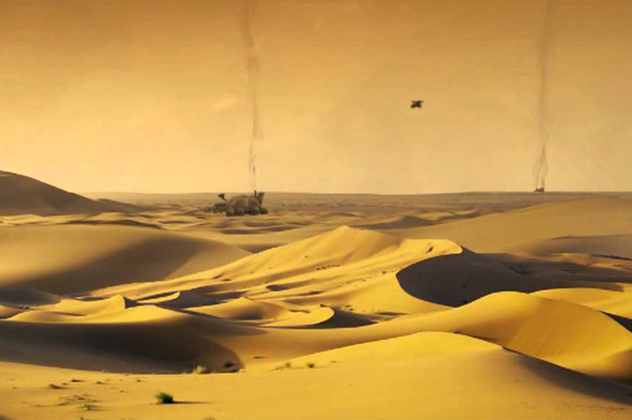
Lucas has often admitted that Frank Herbert’s Dune series heavily influenced him while writing A New Hope. Early drafts of the script included dynastic houses fighting among themselves and, when Princess Leia was captured, she wasn’t smuggling the plans to the Death Star . . . she was smuggling “aura spice.”
Even in the final films, parallels are hard to miss. Both Lucas’s rebels and Herbert’s Fremen battle an empire headed by an evil emperor. The vehicle the Jawas drive—a Sandcrawler—was a repurposed mining vehicle and shared the same name as the vehicle the Arrakins used for mining. Princess Leia’s name is almost identical to Hebert’s character Princess Alia (pronounced “a-leia”). Jabba the Hutt, crime lord of Tatooine, was remarkably similar to Leto Atreides II, the slug-like god-emperor first introduced in Dune Messiah (1969) who eventually ruled Arrakis. Herbert’s Sandworms look remarkably like the Sarlacc (which first appeared in Return of the Jedi). And, of course, both Tatooine and Arrakis are desert planets.
Even the religions featured in Dune and Star Wars are similar. The Dune sisterhood known as Bene Gesserit are similar to the Jedi, and both Paul Atreides and Luke Skywalker inherit their powers through one of their parents (Paul through his mother, Lady Jessica, and Luke through his father, Anakin Skywalker). Both the Jedi and Bene Gesserit enhance their physical and supernatural prowess using training techniques that sound similar (Jedi Bendu and Prana Bendu), and the Jedi mind trick is nearly identical to the Bene Gesserit’s skill, called simply “The Voice.”
Finally, there are the similarities in family ties. In Dune, the antagonist is Paul’s grandfather; in Star Wars, it’s Luke’s father. Both Paul and Luke have sisters who share their powers, and both redeem the mistakes their fathers made.
Steve is the author of 366 Days in Abraham Lincoln’s Presidency: The Private, Political, and Military Decisions of America’s Greatest President. He also writes for KnowledgeNuts.

